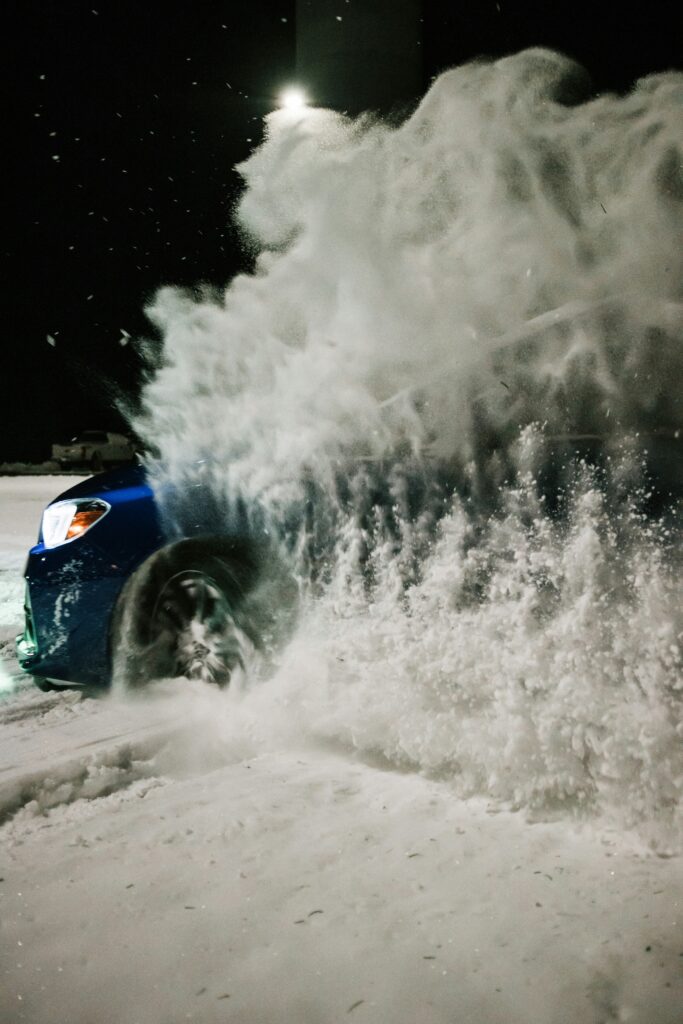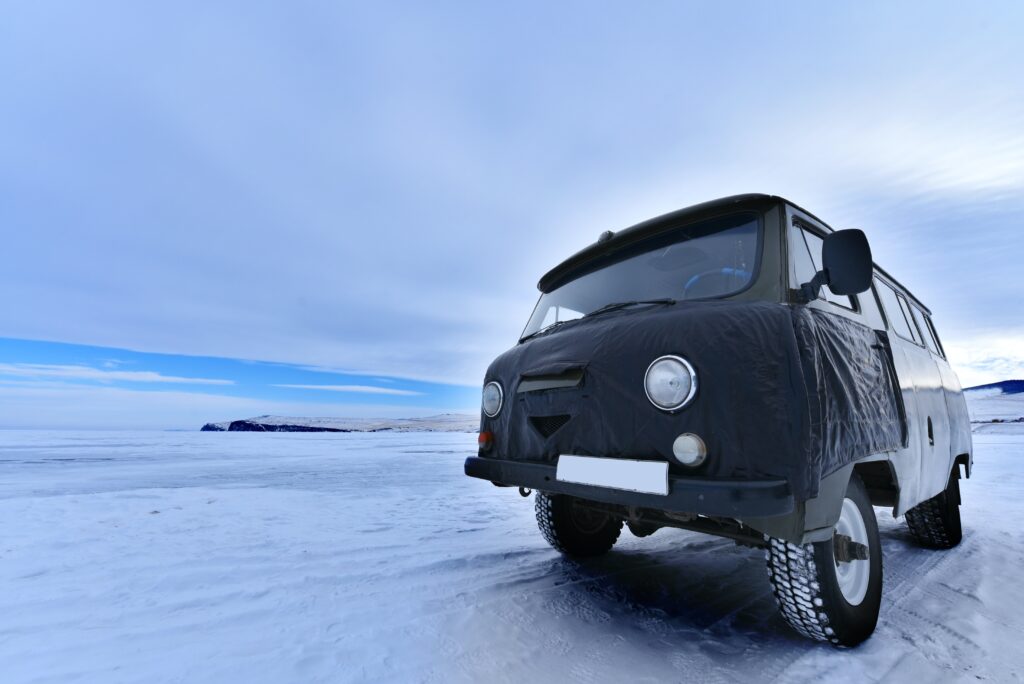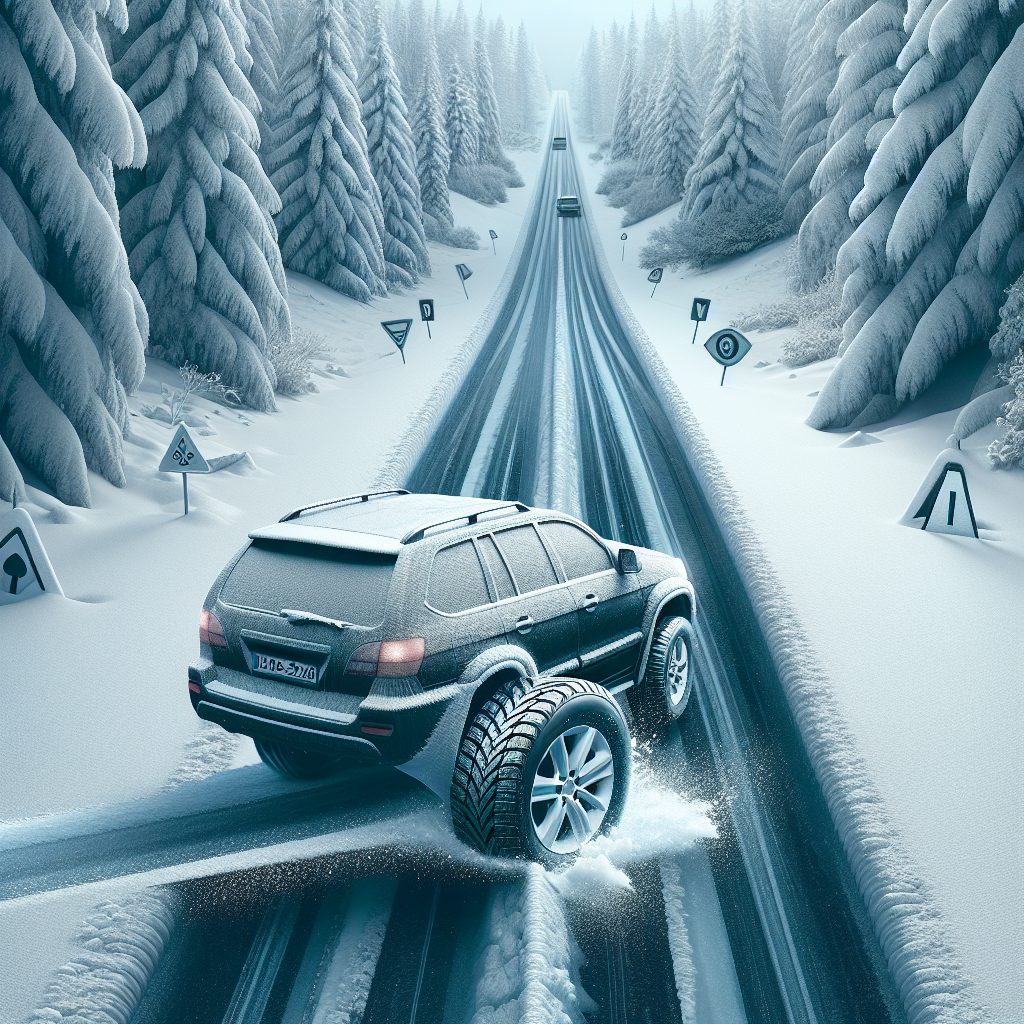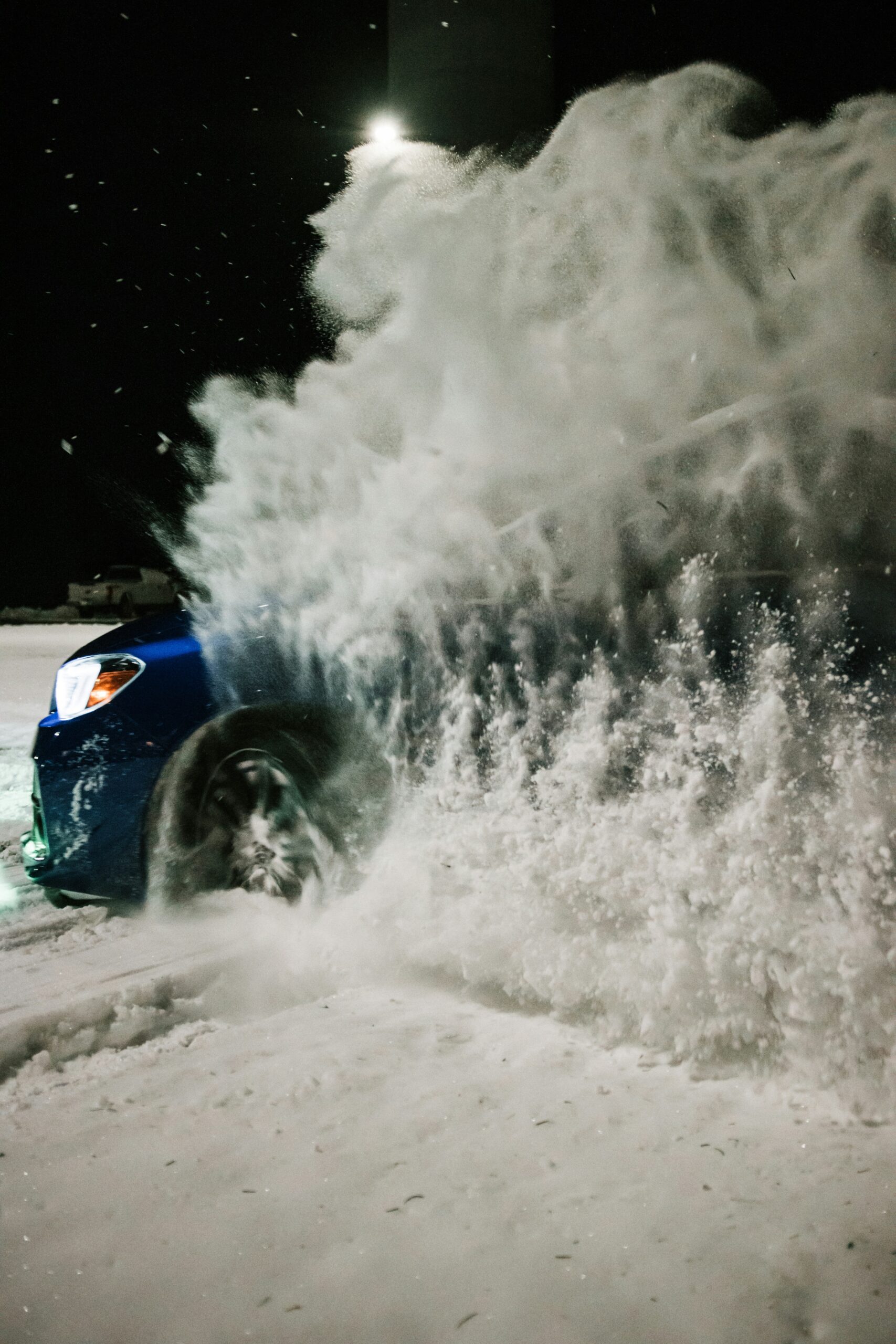Picture this: you’re driving down a snowy road, cautiously navigating through the slippery and icy conditions. Your heart races as you worry about your vehicle skidding or sliding out of control. But what if there was a way to significantly reduce that anxiety? In this article, we explore the effectiveness of winter tires in preventing skidding and sliding on icy roads. Find out how these specialized tires can provide the traction and stability you need to stay safe and confident during the winter months. So buckle up and let’s hit the road to uncover the truth about winter tires!
How Winter Tires Work
Tread Patterns
Winter tires are specifically designed to provide superior traction and control in cold weather conditions, particularly on icy and snowy roads. One of the key factors that contribute to their exceptional performance is the specialized tread patterns they feature.
The tread patterns on winter tires are designed to maximize grip and traction on slippery surfaces. They typically have deeper and wider grooves, which help to channel snow, slush, and water away from the tire’s surface, allowing for better contact with the road. The tread blocks are also specifically designed with sipes and biting edges to help increase traction on icy surfaces.
Rubber Compound
Another important element of winter tire design is the rubber compound used. Winter tires are made of a rubber compound that is specifically formulated to remain pliable even in extremely cold temperatures. The flexibility of the rubber allows the tire to conform to the road surface, maximizing grip and traction.
The rubber compound used in winter tires also contains specific chemical additives that help to improve traction on icy roads. These additives enhance the tire’s ability to grip the surface, reducing the risk of skidding and sliding.
Sipes and Grooves
Sipes are small, thin slits or cuts that are strategically placed in the tread blocks of winter tires. These sipes create extra biting edges that provide additional grip on icy surfaces. When the tire rolls over the ice, these sipes open up and create a vacuum effect, enhancing traction.
Grooves, on the other hand, are the channels between the tread blocks that help to evacuate water, slush, and snow. Deep grooves effectively channel the moisture away from the tire’s surface, ensuring that the tire maintains contact with the road.
Deep Tread Depth
Winter tires have deeper tread depths compared to all-season tires. The deeper tread allows the tire to bite into snow and ice, increasing traction and grip. The extra depth also provides space for the tread to effectively grip the surface, improving the tire’s overall performance in winter conditions. The combination of deeper tread depth, specialized tread patterns, and optimal rubber compounds work together to make winter tires effective in preventing skidding and sliding on icy roads.
Traction on Icy Roads
Friction and Grip
When it comes to traction on icy roads, the key factor is friction. Friction is the resistance between two objects that are in contact with each other. In the case of tires on icy roads, sufficient friction is needed to prevent skidding and sliding.
Winter tires are designed to maximize the friction between the tire and the road surface. The specialized tread patterns, rubber compounds, and biting edges of winter tires enhance the tire’s grip on icy roads, providing better traction and reducing the risk of skidding.
Snow versus Ice
It’s important to note that while winter tires are effective in providing traction on snow-covered roads, they might not perform as well on pure ice. While the specialized tread patterns and rubber compounds of winter tires help to improve grip, the smooth surface of ice limits the tire’s ability to grip the road. In such situations, additional precautions, such as reducing speed and maintaining distance, should be taken to minimize the risk of skidding and sliding.
Biting Edges
Biting edges are the sharp edges or corners created by the sipes and tread blocks on winter tires. These biting edges enhance the tire’s ability to grip the road surface, particularly on icy roads. By digging into the snow and ice, biting edges help to provide better traction and control. The increased number of biting edges on winter tires compared to all-season tires significantly improves their performance on icy roads.
Studdable vs. Non-Studdable
Winter tires come in two types: studdable and non-studdable. Studdable winter tires have provisions to insert metal studs into the tread, which further enhance traction on ice. However, these studs are not legal in all areas and may cause damage to roads. Non-studdable winter tires still provide excellent traction on ice due to their specialized tread patterns and rubber compounds. The decision to choose studdable or non-studdable winter tires depends on local regulations, personal preferences, and the expected road conditions.

Braking Performance
Reduced Stopping Distance
One of the most critical aspects of winter driving is braking performance. Winter tires significantly reduce the stopping distance compared to all-season tires on snowy and icy roads. The specialized tread patterns, deep tread depth, and pliable rubber compounds of winter tires maximize grip and traction, enabling the tires to effectively grip the road during braking maneuvers. As a result, you can brake more confidently and reduce the risk of rear-end collisions.
Improving Traction during Braking
Winter tires not only reduce the stopping distance but also improve traction during braking. The specialized tread patterns and rubber compounds allow the tires to maintain better contact with the road surface, even when braking. This improved traction enables the tires to grip the road more effectively, reducing the chances of skidding or sliding, especially when emergency braking.
Anti-Lock Brake Systems (ABS)
While winter tires play a significant role in improving braking performance, another essential safety feature is the Anti-Lock Brake System (ABS). ABS is a system that prevents the wheels from locking up during braking, allowing the driver to maintain control and steer. When combined with winter tires, ABS enhances braking performance by preventing wheel lock-up and regulating brake pressure. This combination provides optimal control and stability during braking, reducing the risk of skidding or sliding on icy roads.
Electronic Stability Control (ESC)
Electronic Stability Control (ESC) is another vital technology that works in conjunction with winter tires to improve braking performance. ESC helps to keep the vehicle stable and on its intended path by reducing skidding and loss of control during braking. It automatically applies brakes to individual wheels and adjusts engine power to maintain stability. When combined with winter tires, ESC further enhances control and stability, making braking on icy roads safer.
Enhancing Handling and Control
Cornering Performance
Winter tires not only improve traction during straight-line driving and braking but also enhance handling and control during cornering. The specialized tread patterns, flexible rubber compounds, and biting edges of winter tires help to maintain grip and stability when navigating turns on icy roads. This improved cornering performance increases overall control and reduces the risk of sliding or losing control of the vehicle.
Improved Steering Response
Winter tires also provide improved steering response, allowing for better control and maneuverability in winter conditions. The pliable rubber compounds and optimized tread designs enable the tires to quickly respond to steering inputs, translating into more precise and predictable handling. This improved steering response plays a crucial role in navigating icy roads and avoiding potential hazards.
Reduced Hydroplaning Risk
Hydroplaning occurs when a layer of water builds up between the tires and the road, causing the tires to lose contact with the road. While hydroplaning is more commonly associated with rainy conditions, it can still occur on icy roads due to melting snow, slush, or freezing rain. Winter tires with deep and wide grooves effectively displace water, slush, and snow, reducing the risk of hydroplaning and maintaining contact with the road surface.
Enhanced Stability Control
Stability control is essential for maintaining control of the vehicle, especially on slippery winter roads. Winter tires, with their specialized designs and materials, work in tandem with stability control systems to enhance stability and control. The improved grip and traction provided by winter tires, combined with stability control technology, ensure that the vehicle stays on its intended path, even in challenging winter conditions.

Factors Affecting Skidding and Sliding
Temperature and Road Conditions
Temperature and road conditions are critical factors that contribute to skidding and sliding on icy roads. As temperatures drop, icy patches and black ice can form, creating extremely slippery conditions. Winter tires are designed to maintain their performance and grip in lower temperatures, ensuring that you have better control and reduced skidding risk in these conditions.
Tire Pressure
Proper tire pressure is crucial for optimal performance and safety, particularly in winter conditions. Underinflated tires reduce the contact patch with the road, compromising grip and handling. Overinflated tires, on the other hand, reduce traction and can lead to a harsh and less stable ride. Regularly checking and maintaining the recommended tire pressure for winter tires is essential to maximize their effectiveness in preventing skidding and sliding.
Driving Habits and Speed
One of the most significant factors influencing skidding and sliding on icy roads is driving habits and speed. Regardless of the type of tires you have, driving at excessive speeds or engaging in aggressive maneuvers greatly increases the risk of losing control. It is essential to adjust your driving habits in winter conditions, slow down, and allow for greater stopping distances to maintain control and minimize the risk of skidding or sliding.
The Role of Winter Tires
Maintaining Traction
The primary role of winter tires is to maintain traction and control on icy roads. The specialized designs, rubber compounds, and tread patterns allow winter tires to effectively grip the road surface, reducing the risk of skidding and sliding. By maintaining traction in cold weather conditions, winter tires help you navigate safely and confidently on snowy and icy roads.
Increasing Safety Margin
Winter tires offer an increased margin of safety compared to all-season tires. The enhanced grip and traction provided by winter tires allow for better control and improved braking performance. This increased safety margin helps to reduce the chances of accidents, especially in unpredictable winter driving conditions. Investing in winter tires provides an added layer of safety and peace of mind when traveling during winter months.
Reducing the Risk of Skidding and Sliding
Skidding and sliding pose significant risks on icy roads, leading to accidents and loss of control. Winter tires substantially reduce the risk of skidding and sliding by improving traction and grip. The specialized tread patterns, rubber compounds, and biting edges work together to enhance control and stability, even in challenging winter conditions. By reducing the risk of skidding and sliding, winter tires play a crucial role in keeping you and your vehicle safe on icy roads.

Replacing All Four Tires
Why It’s Important
When it comes to winter tires, it is essential to replace all four tires rather than just two. Replacing only two tires can lead to an imbalance in traction, compromising the vehicle’s stability and handling. By replacing all four tires, you ensure consistent traction and control, maximizing the effectiveness of your winter tires.
Mixing Tire Types
Mixing tire types, such as using two winter tires and two all-season tires, can have adverse effects on the vehicle’s stability and performance. Different tire types have different tread designs, rubber compounds, and traction capabilities. This inconsistency in traction can lead to unpredictable handling, reduced grip, and an increased risk of skidding or sliding. To ensure optimal performance, it is crucial to use a full set of winter tires.
Different Wear Patterns
Tires wear at different rates, depending on factors such as driving style, road conditions, and maintenance. If you mix new winter tires with partially worn tires, the different wear patterns can affect handling, stability, and traction. The depth and configuration of the tire treads play a significant role in grip, and inconsistent wear patterns can compromise overall performance.
Signs of Tire Wear
Regularly inspecting your winter tires for signs of wear is important for maintaining their performance and safety. Look for signs of uneven wear, such as bald spots, low tread depth, or damage. If you notice any significant wear or damage, it’s time to consider replacing your tires. Winter tires that are worn or damaged have reduced effectiveness, compromising your safety on icy roads.
Winter Tires versus All-Season Tires
Tread Design and Performance
One of the primary differences between winter tires and all-season tires is their tread design and performance characteristics. Winter tires have more aggressive tread patterns with deeper grooves and specialized siping, allowing them to bite into snow and ice and provide better traction. All-season tires, on the other hand, have less aggressive tread patterns that provide a balance between different road conditions, but may not perform as well in extreme winter conditions.
Temperature Range
Another key difference between winter tires and all-season tires is their temperature range. Winter tires are specifically engineered to maintain flexibility and excellent traction in cold temperatures. Their rubber compounds are designed to remain soft and pliable even in freezing conditions, maximizing grip. All-season tires, while suitable for a range of temperatures, may become stiffer and lose traction in colder weather.
Winter-Specific Features
Winter tires are specifically designed and optimized for cold weather and winter driving conditions. Their unique features, such as specialized tread patterns, pliable rubber compounds, and increased biting edges, provide enhanced performance on snow and ice. All-season tires, while capable of handling different road conditions, lack the specific design elements that maximize winter performance. When it comes to winter driving, winter tires are the superior choice.

Choosing the Right Winter Tires
Research and Reading Reviews
Choosing the right winter tires for your vehicle and driving needs requires research and careful consideration. Read reviews and gather information about different brands, models, and tire performance in winter conditions. Pay attention to factors such as traction, handling, braking performance, and overall customer satisfaction. By doing your research, you can make an informed decision and choose the best winter tires for your specific requirements.
Identifying Driving Needs
Consider your specific driving needs and the conditions you will encounter during the winter months. Are you driving in urban areas with well-maintained roads, or will you be navigating rural areas with more challenging conditions? Identifying your driving needs will help determine the level of performance and features required from your winter tires.
Specific Winter Tire Ratings
Look for winter tire ratings that provide objective assessments of a tire’s performance in winter conditions. These ratings typically include criteria such as snow traction, ice traction, and braking performance. Ratings from reputable sources can be a valuable tool for comparing different winter tire options and making an informed decision.
Reliable Brands and Manufacturers
Choose winter tires from reliable brands and manufacturers known for their expertise and commitment to producing high-quality tires. Established tire manufacturers invest in research and technology to continually improve the performance and safety of their products. Opting for established brands can provide confidence in the quality and reliability of your winter tires.
Additional Winter Driving Tips
Maintaining Proper Tire Pressure
Proper tire pressure is crucial for optimal performance and safety in winter conditions. Cold temperatures can cause tire pressure to drop, so regularly check and maintain the recommended tire pressure for your winter tires. Correct tire pressure provides better traction, handling, and braking performance, reducing the risk of skidding and sliding.
Adapting Driving Techniques
Adapting your driving techniques to the prevailing winter conditions is essential for maintaining control and reducing the risk of accidents. Remember to slow down, increase your following distance, and avoid sudden and aggressive maneuvers. Smooth, gentle inputs allow your winter tires to maximize their grip and traction, minimizing the risk of skidding and sliding.
Emergency Preparedness
Winter driving can sometimes pose unexpected challenges, so it’s important to be prepared for unforeseen situations. Consider carrying an emergency kit in your vehicle that includes items such as a small shovel, ice scraper, jumper cables, blankets, extra clothing, and non-perishable food. Having these essential items can help keep you safe and comfortable in case of an emergency on icy roads.
Regular Tire Maintenance
Regular tire maintenance is crucial for optimal performance and safety, particularly in winter conditions. Check your tire tread depth regularly, replace worn tires promptly, and inspect for signs of damage or uneven wear. Additionally, ensure that your winter tires are properly aligned and balanced for optimal handling and performance. By maintaining your tires properly, you can maximize their effectiveness in preventing skidding and sliding on icy roads.
In conclusion, winter tires are essential for preventing skidding and sliding on icy roads. The specialized tread patterns, rubber compounds, and deep tread depths of winter tires provide superior traction and control in cold weather conditions. By understanding how winter tires work and considering factors such as braking performance, handling, and tire maintenance, you can choose the right winter tires for your vehicle and driving needs. Stay safe on icy roads by investing in quality winter tires and adapting your driving techniques to the prevailing conditions. Remember, winter tires are your best ally when it comes to staying in control and reducing the risks associated with winter driving.


